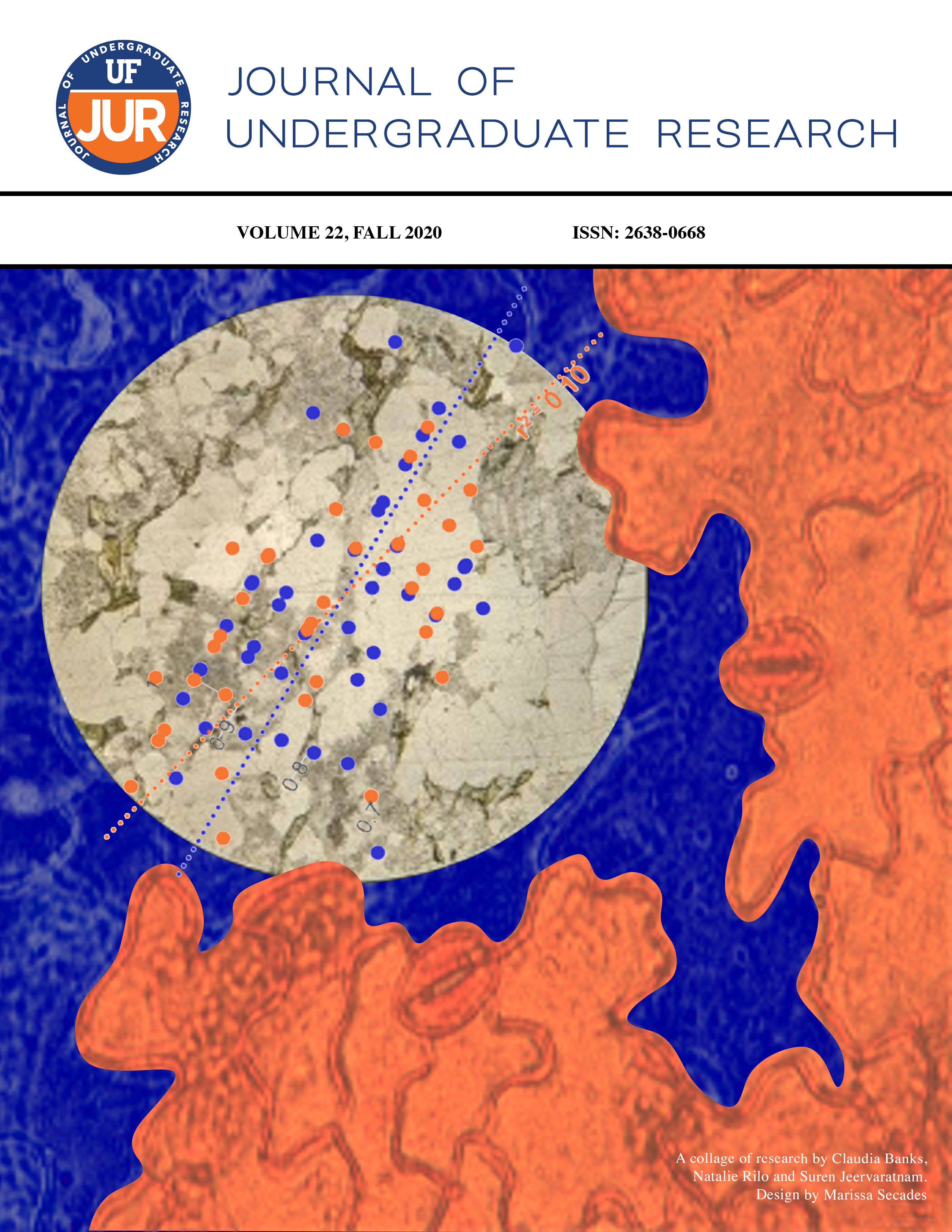Design of Pulse Oximeter Solution for Conscious Rodents
DOI:
https://doi.org/10.32473/ufjur.v22i0.121740Keywords:
Pulse Oximetry, Neuromodulation, NoninvasiveAbstract
Neuromodulation can be used to control organ function through exogenous augmentation of neural activity via targeted delivery of an electrical stimulus. Recently, neuromodulation has been a topic of investigation to treat many illnesses and conditions including Parkinson’s disease, epilepsy, obesity, chronic pain, type 1 diabetes, and hypertension. During neuromodulatory treatments, it is important to measure both the physiological response of the target system as well as any off-target systems that may be engaged from the delivered stimulus. Stimulation of the vagus nerve, a common target of neuromodulatory therapies, causes a vasovagal response which results in decreased cardiac rate and arteriolar dilatation. It is possible to measure these physiological parameters in anesthetized rats, but it is a challenge in conscious, moving rats because of motion artifact introduced to the sensors. By creating a noninvasive, stabilized pulse oximeter that measures the blood oxygenation waveform, one can analyze the heart rate in awake behaving animals. This study reports the design of a heart rate monitor used to monitor effects of heart rate variability during neuromodulation experiments. Design of this device included testing different sensors, methods of attaching to the rodent, microcontrollers, and wireless communication modules.
Metrics
Downloads
Published
Issue
Section
License
Some journals stipulate that submitted articles cannot be under consideration for publication or published in another journal. The student-author and mentor have the option of determining which journal the paper will be submitted to first. UF JUR accepts papers that have been published in other journals or might be published in the future. It is the responsibility of the student-author and mentor to determine whether another journal will accept a paper that has been published in UF JUR.

